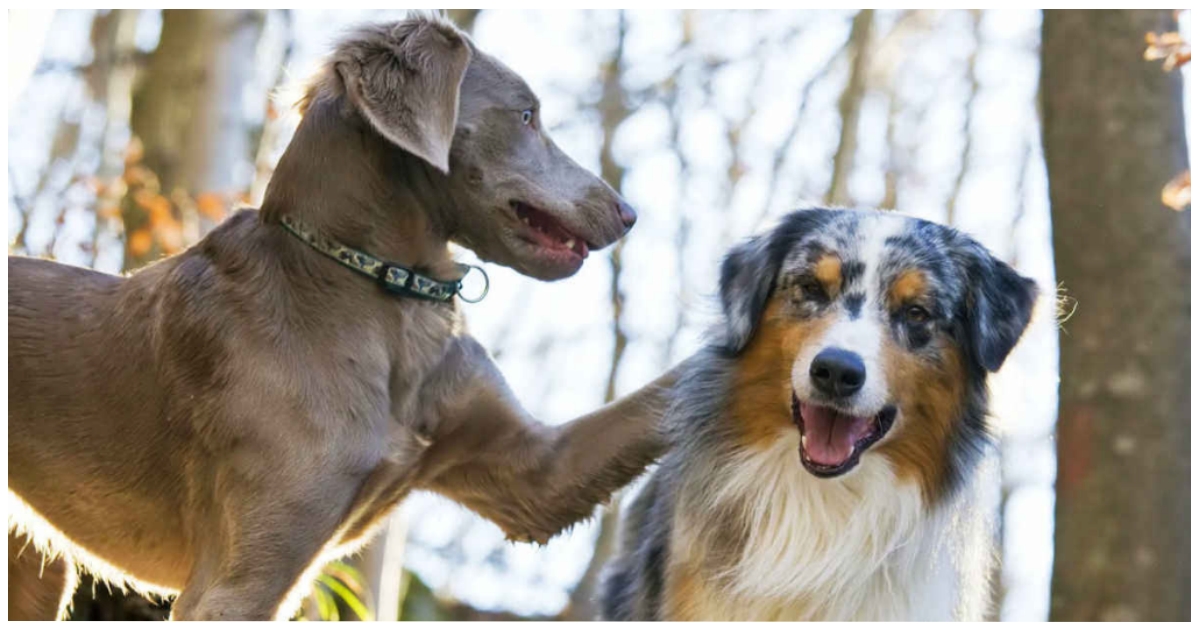Some people think that having a second dog in the family means double the love, double the fun, and double the loyalty. All of that is true, but there are many things to consider first.
Before you head to the local shelter to add another pooch to the pack, there are at least 12 things to consider prior to making the leap.
1) Double Dogs Means Double Expense
There will be more costs involved with having two dogs. Consider more food, more vet bills, more grooming, more supplies, and any other additional expenses that pop up along the way.
Take a good hard look at your financial situation and ask yourself if having another canine member in the family is feasible for your budget. Make a spread sheet and see what is left over per month. Is there room in the budget for another pet? Staying organized and being prepared is always the way to go!
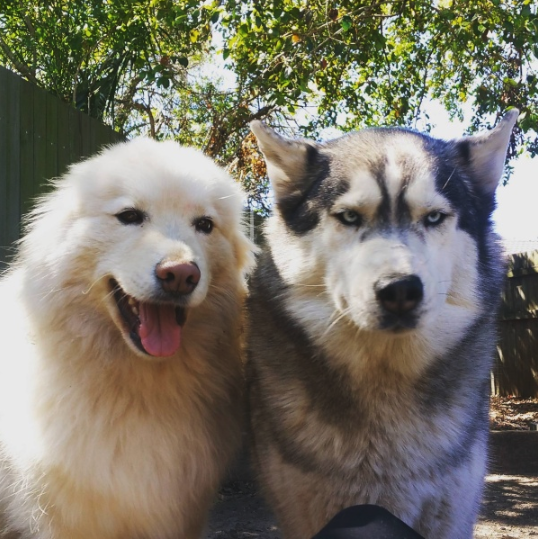
2) First Dog Jealousy Syndrome Vs. Aggression
Some dogs will not easily welcome another animal to the pack but there are things you can do to ease the transition if adding another dog is possible. Consider the personality of your dog around other animals. If he gets dog aggressive while on walks, at the dog park or when other dogs try to visit, adding another dog may not be possible.
However, dog jealousy can be a changed behavior when approached properly. Introducing them on neutral turf is always a better option. Your local shelter will have suggestions on how to do this as successfully as possible. A two-dog household can be in your future but getting there has a lot to do with the tolerance, patience, and acceptance.
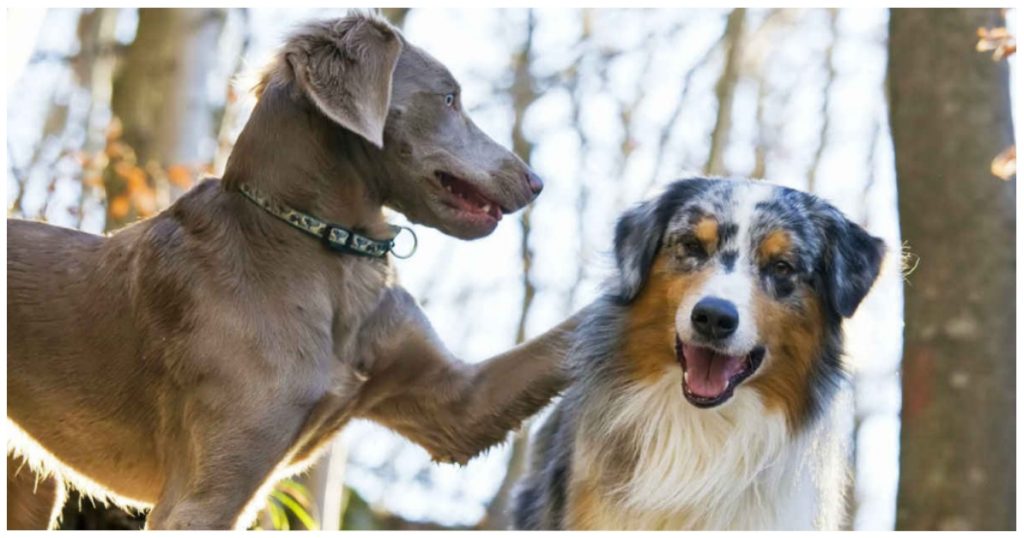
3) Changing Family Dynamics
The way your current routine is set up will change. Can you be flexible enough to handle it? Walking two dogs versus one is certainly a different experience but it also a lot of fun. Dogs are naturally pack animals. Your dog may feel inspired with a friend at her side and want to go the distance. A longer walk is good for both of you.
Mealtime, playtime, and cuddle time will also change– but again, like walks, it can be a wonderful change you all will enjoy. Who wouldn’t love 2x the snuggles? Regardless, things will change and you will likely have to adjust. Remaining flexible is key but the rewards are so worth it!
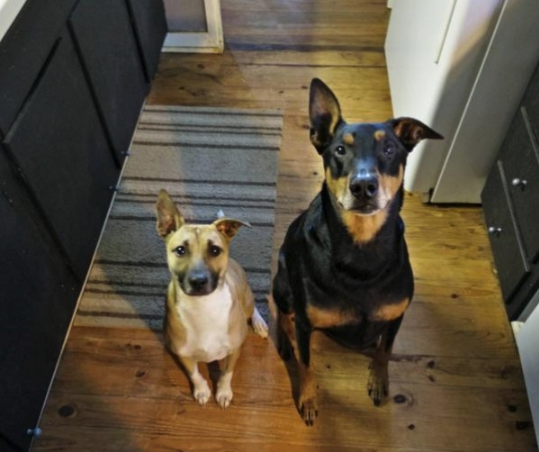
4) Gender Decisions
Some experts will tell you same gender littermates don’t do well together and others will say it’s a matter of how they are raised. Will you get a female dog if you currently have a boy? Over at petMD, they say there are no set rules about good dog matches because each dog is a unique individual.
The best way to decide is to have the dogs meet first. Regardless of gender, it’s how their personalities jive that truly matters.
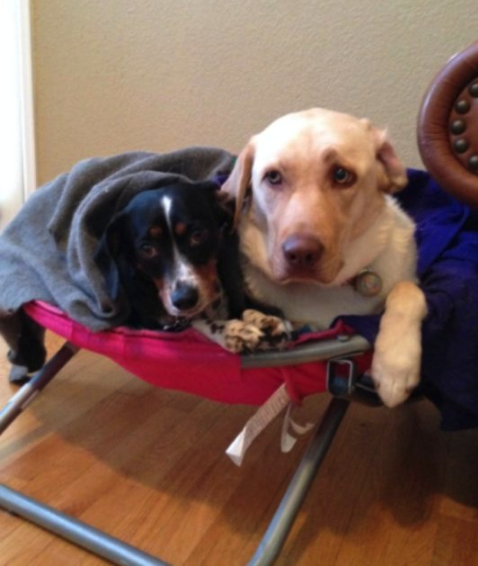
5) Worst Case Scenario
You fall in love with that second dog but no matter how many times you try, your #1 won’t accept her into the fold. What do you do?
There are several ways you can go about this before giving up. Is your home conducive to keeping them separate so you can transition them slowly? So long as your first dog isn’t trying to attack the new dog, acceptance is possible. NEVER put a dog in harm’s way. However, if your #1 is just being cranky or avoiding the dog altogether, there is hope. You can contact your vet or an animal behaviorist and ask their advice. Again, patience is key.
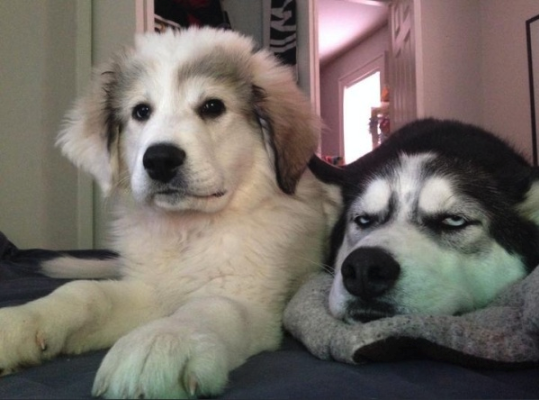
6) Sleeping Arrangements
If your current dog sleeps with you on the bed, where is the second dog going to sleep? Some dogs will surprise you and be totally okay with a new buddy in the family. Other dogs may not be able to relax and fit that perfect spot they once had.
Think about how you can make this transition easy on both dogs, as well as on you. Putting a new dog bed on top of your own bed, for your new pup, may be the way to go. Or keeping them separate until they get to know each other better may be the best option. Again, be flexible. Your dogs will follow your cues.

7) Travel Time
If you like to take trips with your dog, then you want your second dog to enjoy them as well. The best way to approach this is to get her used to the car right away. If she initially gets car sick, your vet can recommend several natural ways to treat this. If those don’t work, then prescription meds may be the route to go. In general, dogs love car rides. Keep your car cool and comfortable and fido x 2 should be in doggy heaven.
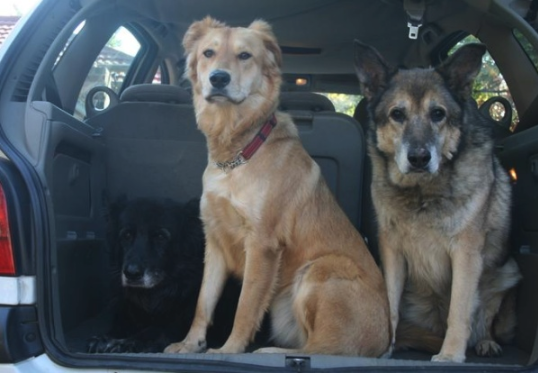
8) Doggy Health
Your first dog is properly vaccinated and up-to-date on her vet visits. Your new dog, especially a puppy, will need multiple vaccines and to be spayed/neutered. This is all normal and dogs will be fine EXCEPT if your new dog has something contagious. Make sure you ask questions at the shelter and take your new dog to the vet right away.
If your new doggo has something that can be spread to your other pooch, keep them separated until it’s safe. Your vet will know what to do so just keep an open ear and an open mind.
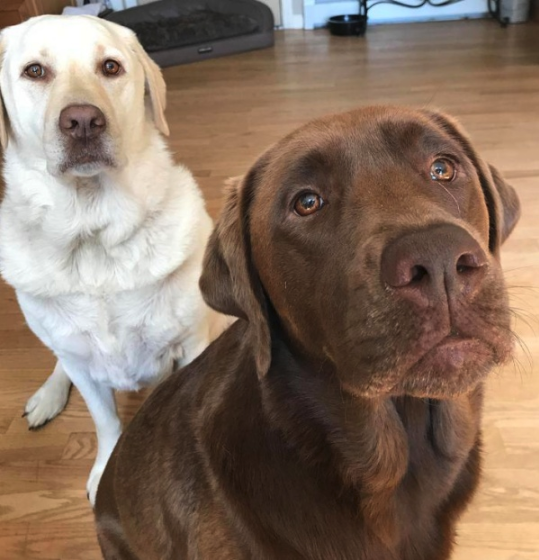
9) Assessing Current Dog Behavior
If your current pooch isn’t the most well trained or has any sort of issues from soiling inside the house to barking frequently, the second dog will likely pick up on this and mimic their behavior. Instead of having one dog who barks while you go to work, are you prepared to handle two that do this?
The good news: Old dogs can be taught new tricks! Both dogs can work on training. You can sign them up for training classes at your local pet store or even read some books and try things yourself. Dogs are very receptive, especially when treat motivated. They will also inspire each other. Adding a new dog can actually make your first dog better behaved. Pretty cool, huh?
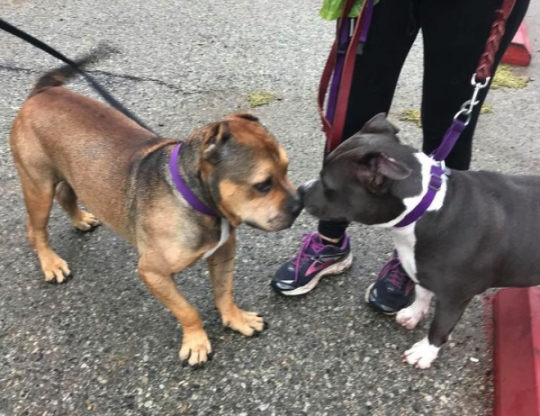
10) Time Commitment
Ask yourself how much time you have for your current dog. Pets are a time commitment but we promise they are worth EVERY SECOND! Because they are pack animals, dogs do like to entertain each other but they need you there for guidance. Make sure you are willing to commit to walks, playtime and those extra snuggles. If so, go for it!
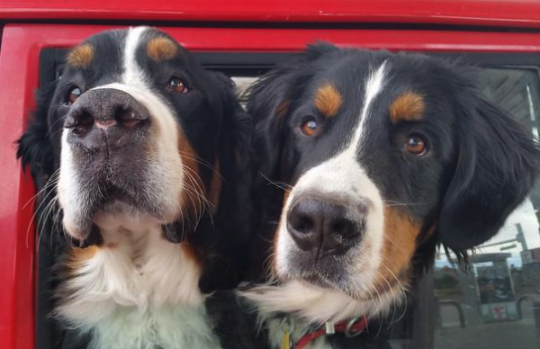
Getting a second dog can be rewarding, fun, and life-enhancing but you should be prepared. If you are willing to take advice, work with a behaviorist if needed, and gradually introduce your new dog to the family, then go for it. Be the kind of person your dog thinks you are, whether you have one dog, two, or ten.
And remember, the shelters are filled with dogs of all ages who need homes. Adopting a dog closer to your own dog’s age, or even a senior, may be the better route. Puppies, although adorable, are a bigger commitment. Whatever you choose, we know you’ll all live happily ever after!
Feature photo: Source: aircraftvideos4/Imgur
Please ‘SHARE' to pass on this story to a friend or family member
Next Story:
Basics of Dog Training
It’s essential for Dog parents like you to know certain basic factors that determine your relationship with your Dog and can go a long way in training him effectively.
Before you begin training your Dog, it is absolutely essential that you build a loving bond with him. This is important as it helps you to understand his needs and instincts and also allows your Dog to have complete trust in you.
Know more about Dog care from this free mini course
Let us see how…….
How To Bond With Your Dog
Building a bond with your Dog is the first and the most crucial step involved in training him successfully. As soon as you bring your Dog home, you must first try to develop a caring and loving relationship with him in order to win his trust and confidence.
When Dogs are secure in the knowledge that they belong to the family, they are more likely to respond better to their owners’ training commands. Just like with any relationship, there must be mutual trust and respect between you and your Dog.
Trust takes time to develop and respect comes from defining boundaries and treating any breach of those boundaries with firmness and fairness.
Without enforceable limitations, respect can’t be developed. And when there is no respect, building a bond with your Dog is almost impossible.
4 Golden Rules To Building A Relationship With Your Dog :
- Spend quality time together;
- Take him out in the world and experience life together;
- Establish and promote a level of mutual respect; and
- Develop a way of communicating to understand each other’s needs.
Building a bond with your Dog will not only help you manage him better but will also make your Dog calm, quiet and an extremely well-adjusted pet.
Love Your Dog and He Will Love You back
Once you’re succesful in building a bond with your Dog, you can rest assured that training him and teaching him new and clever tricks will be a cakewalk.
Learn how to bond with your Dog with this free mini course.
How Your Dog Learns…
Your Dog’s learning period can be divided into five phases:
The Teaching Phase – This is the phase where you must physically demonstrate to your Dog exactly what you want him to do.
The Practicing Phase – Practice makes Perfect. Once a lesson is learnt, practice with your Dog what you have just taught him.
The Generalizing Phase – Here you must continue practicing with your Dog in different locations and in an environment with a few distractions. You can take your Dog out for a walk, or to a nearby park and command him to practice whatever you’ve taught him.
Practicing the learned lessons in multiple locations and in the presence of small distractions will help him learn and retain lessons better .
The Testing Phase – Once you’re sure that your Dog has achieved almost 90% success….he responds correctly almost every time you give a command, you must start testing his accuracy in newer locations with a lot of distractions.
Example: Take him to the local shopping mall and ask him to obey your command. He may not come up with the correct response the very first time you do this, but you must not lose hope.
The idea is to test your Dog to see how he responds in an environment which is new to him. Set-up a situation where you are in control of the environment and your Dog.
There are only 2 possibilities:
- Your Dog succeeds!!! (Trumpets please!)
- In case your Dog fails, re-examine the situation. Review and/or change your training. Then try testing again.
Keep on testing until he succeeds. Follow the rule of the 3 Ps – patience, persistence, praise.
Internalizing Phase – Finally, comes the extremely rewarding phase where your Dog does everything he is taught to do even without your commands.
Remember:
- Never scold your Dog if he fails. It’s not his fault. You have failed as a trainer!
- You must be patient and persistent for your efforts to show rewards.
- Appreciate and love your Dog when he does it right! A little encouragement will work wonders for your Dog.
Please ‘SHARE' to pass on this story to a friend or family member
Stay for one more story, be sure to check out these Top Trending Stories below:
10 Of The “Most Loyal” Dog Breeds On The Planet
Giving love and support to humans is something that some dogs do better than others.
While many dogs love everyone they meet and are willing to take treats or belly rubs from anyone, the pups we found are just the opposite.
These 10 dogs are some of the most loyal breeds on the planet. They are rock steady in their loyalty to their owner no matter what.
1) Akita
When the American Kennel Club (AKC) lists loyalty to describe the temperament of the Akita, you know they mean business. The beautiful double-coated working dog of Japanese ancestry is considered hardwired in protecting those she loves. They should be socialized with other dogs and people from the time they are puppies. Their silly, fun, but dignified personalities round out the loyal Akita.
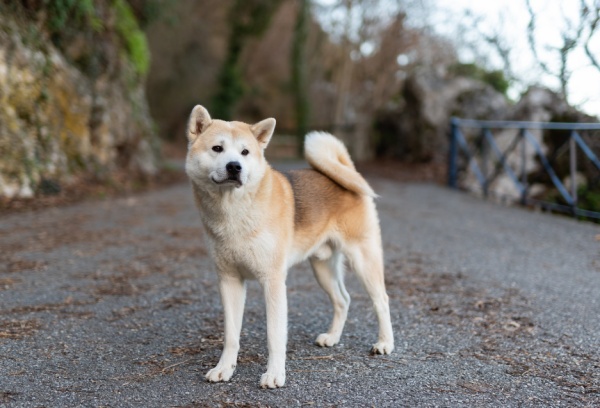
2) Boxer
This working dog is smart, full of energy, and oh so loyal to their family. They get along great with kids and have an innate instinct to protect their pack. He’s a watchdog with a heart of gold who oozes dedication to his owner.
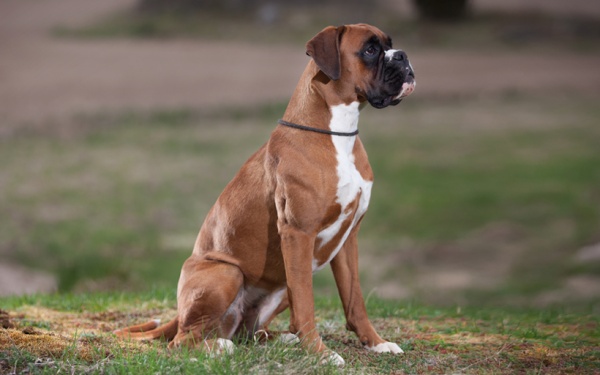
3) Skye Terrier
Known as the “small dog with the big ears,” this adorable breed hails from the Scottish Isle of Skye, hence the name. Whether you live in the city or the country, this small dog with a big personality is steadfast in snuggling, playtime, and remaining loyal to his owners.
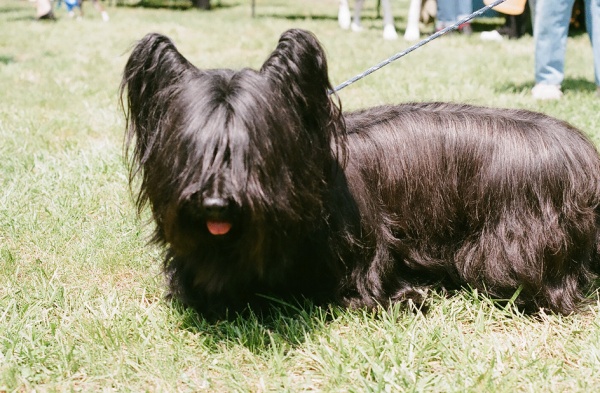
4) Beagle
This merry hound is friendly, curious and incredibly loyal. While he doesn’t mind the occasional couch potato time, this spunky pooch is energetic and merry. A fun fact about this hound: the breed standard is for 13 inches and under and another in the 13-15 inch category. No matter how you size him, these adorable dogs just want to cling to you.

5) Shar-Pei
This wrinkly non-sporting breed is standoffish to strangers but very loyal to his owner. His ancient Chinese roots are part of the charm of the Shar-Pei. Regal, strong, and smart, if you want a BFF for life, this loose-skinned pooch may be the right choice for you.


